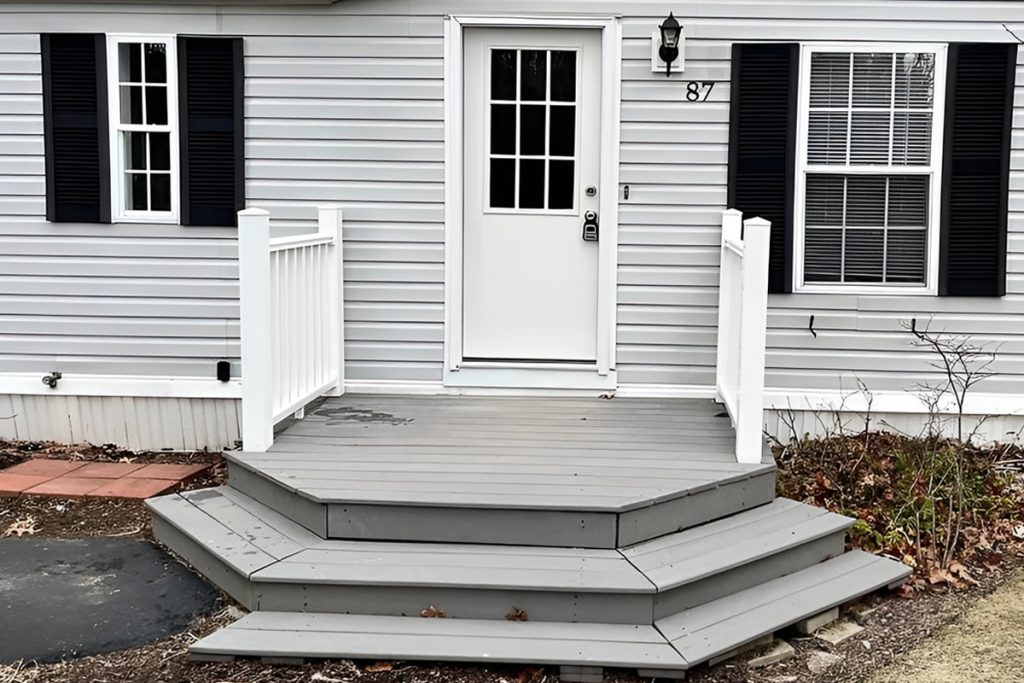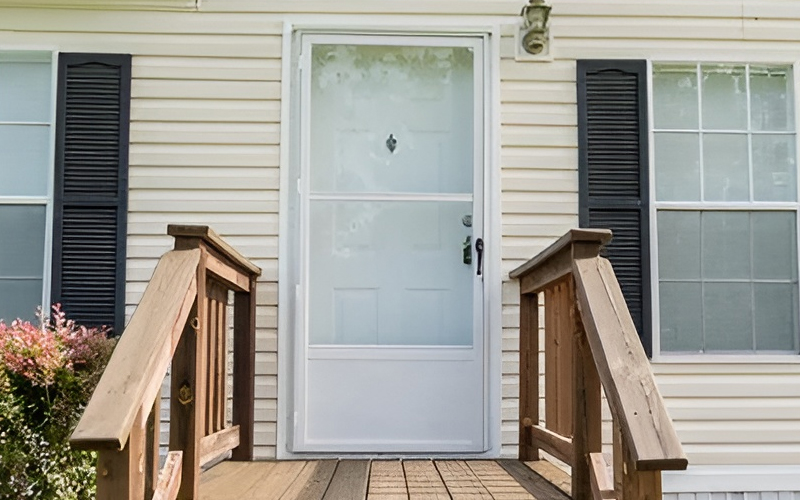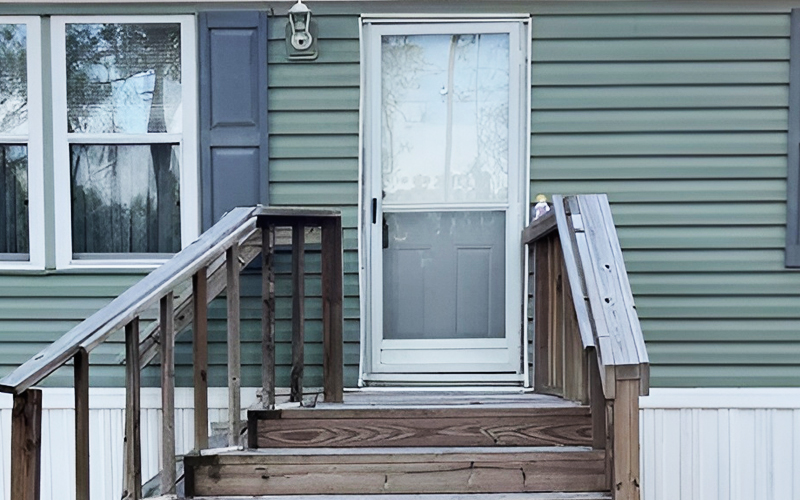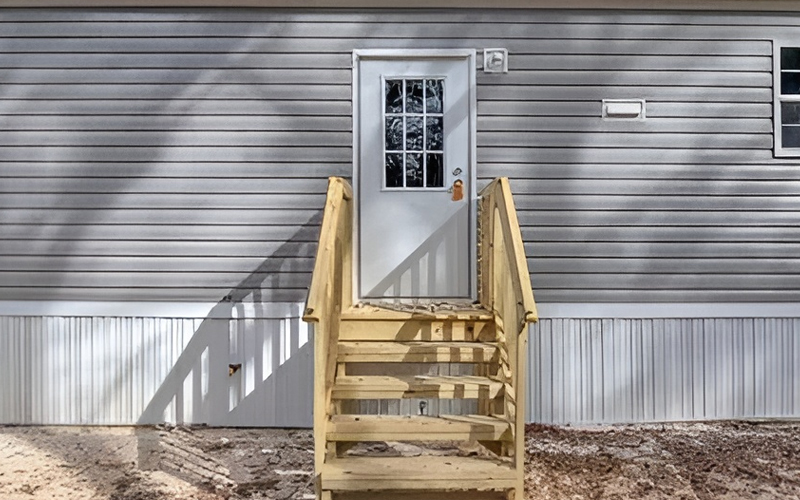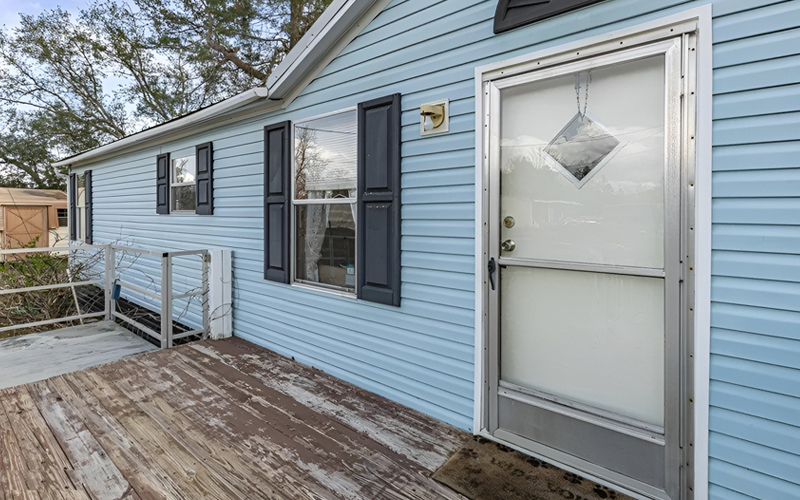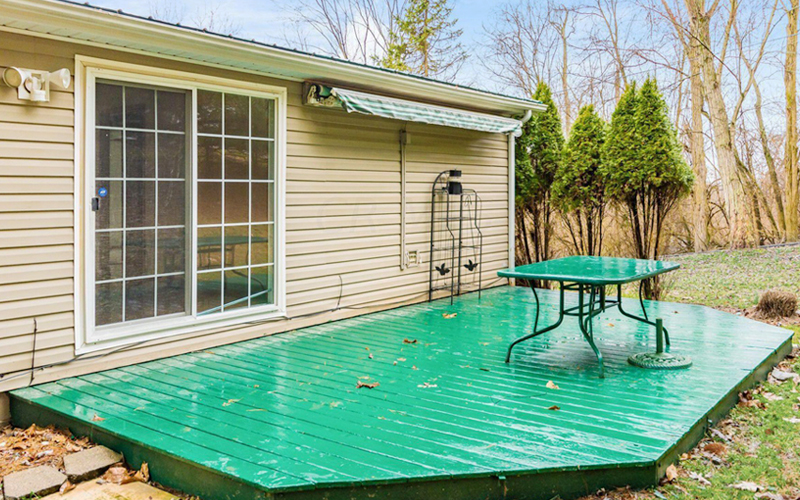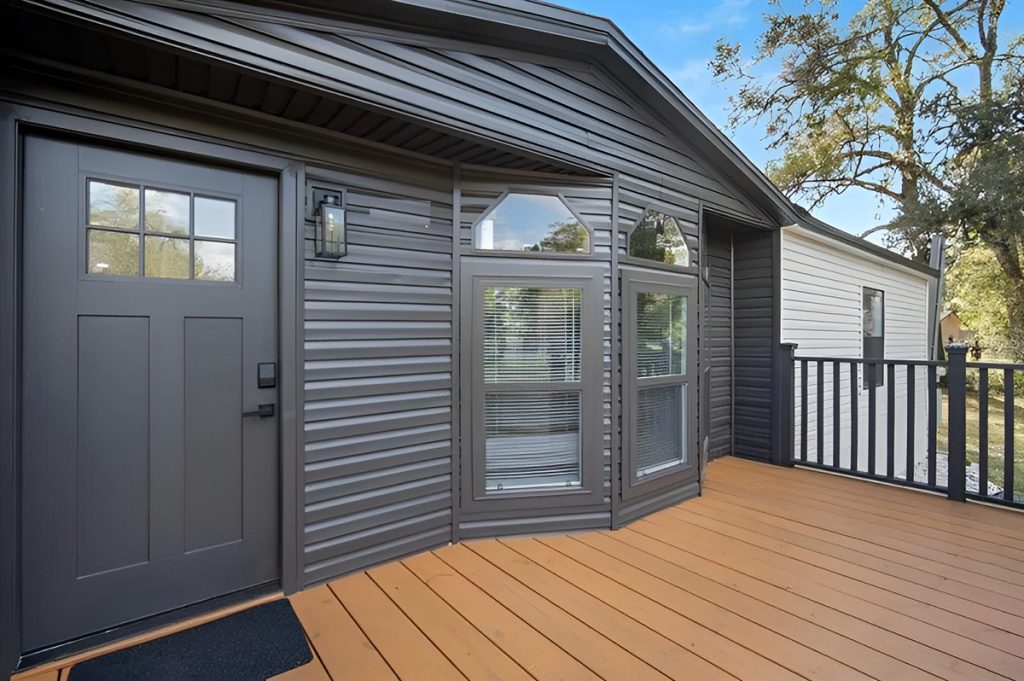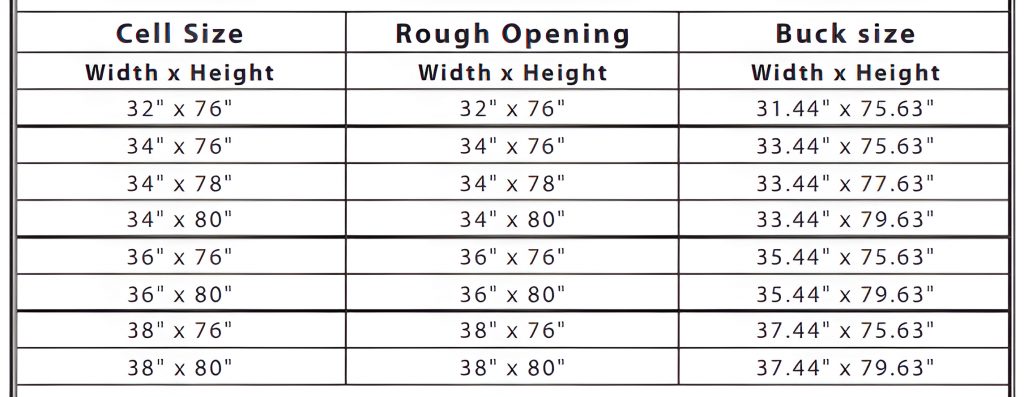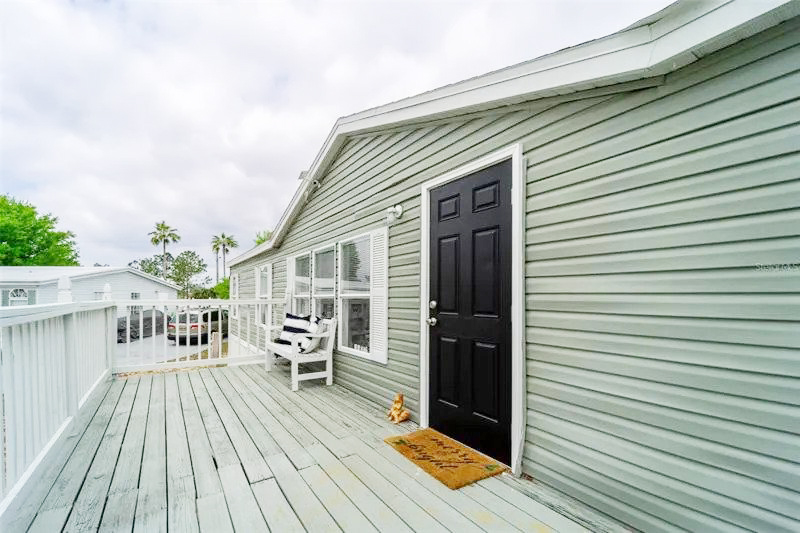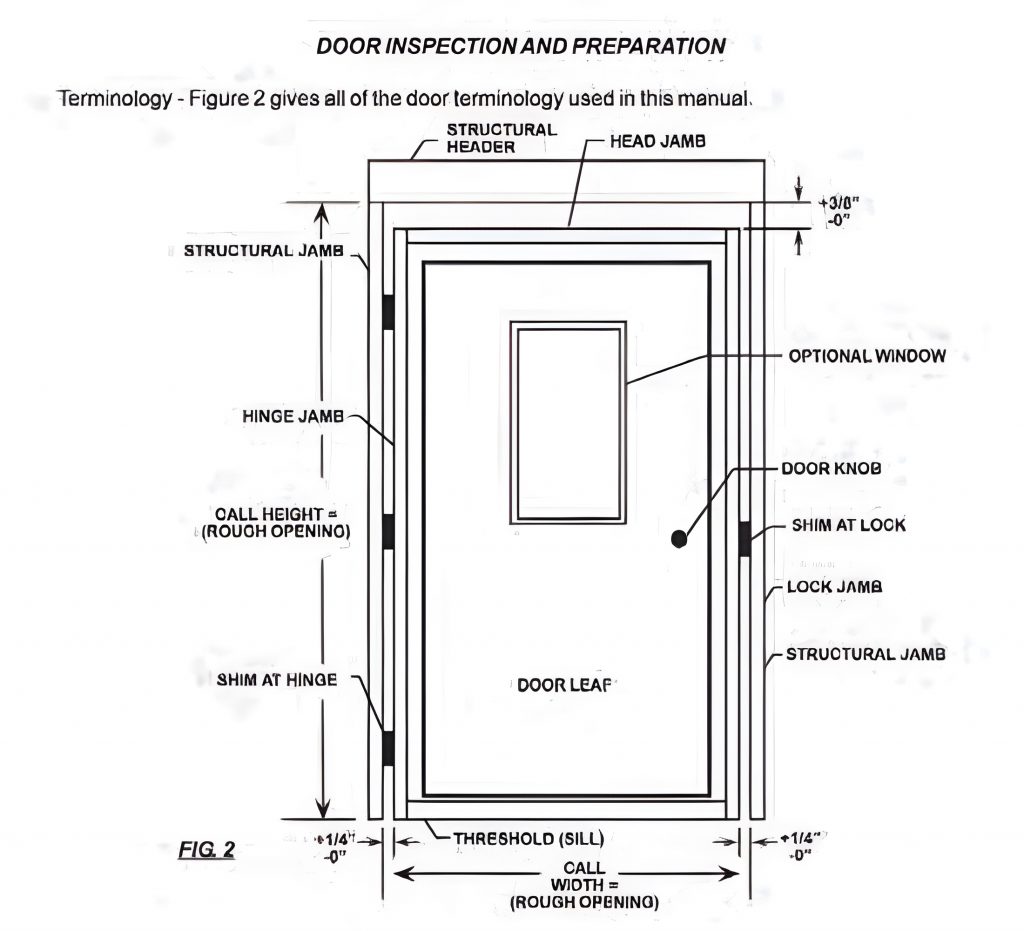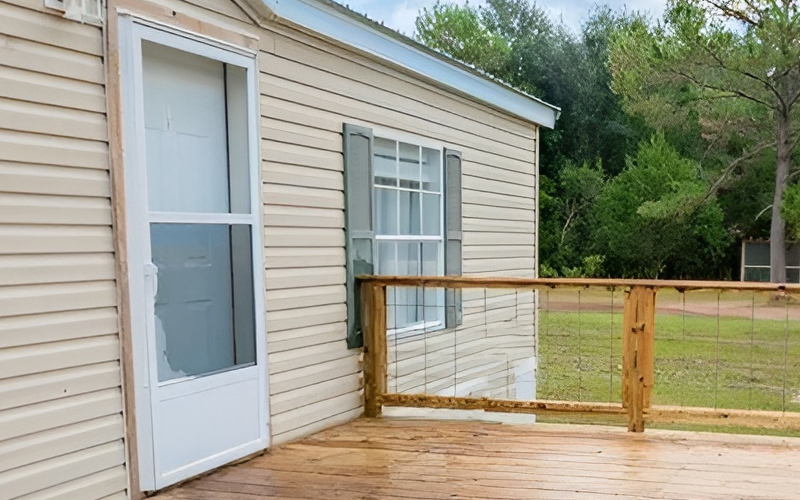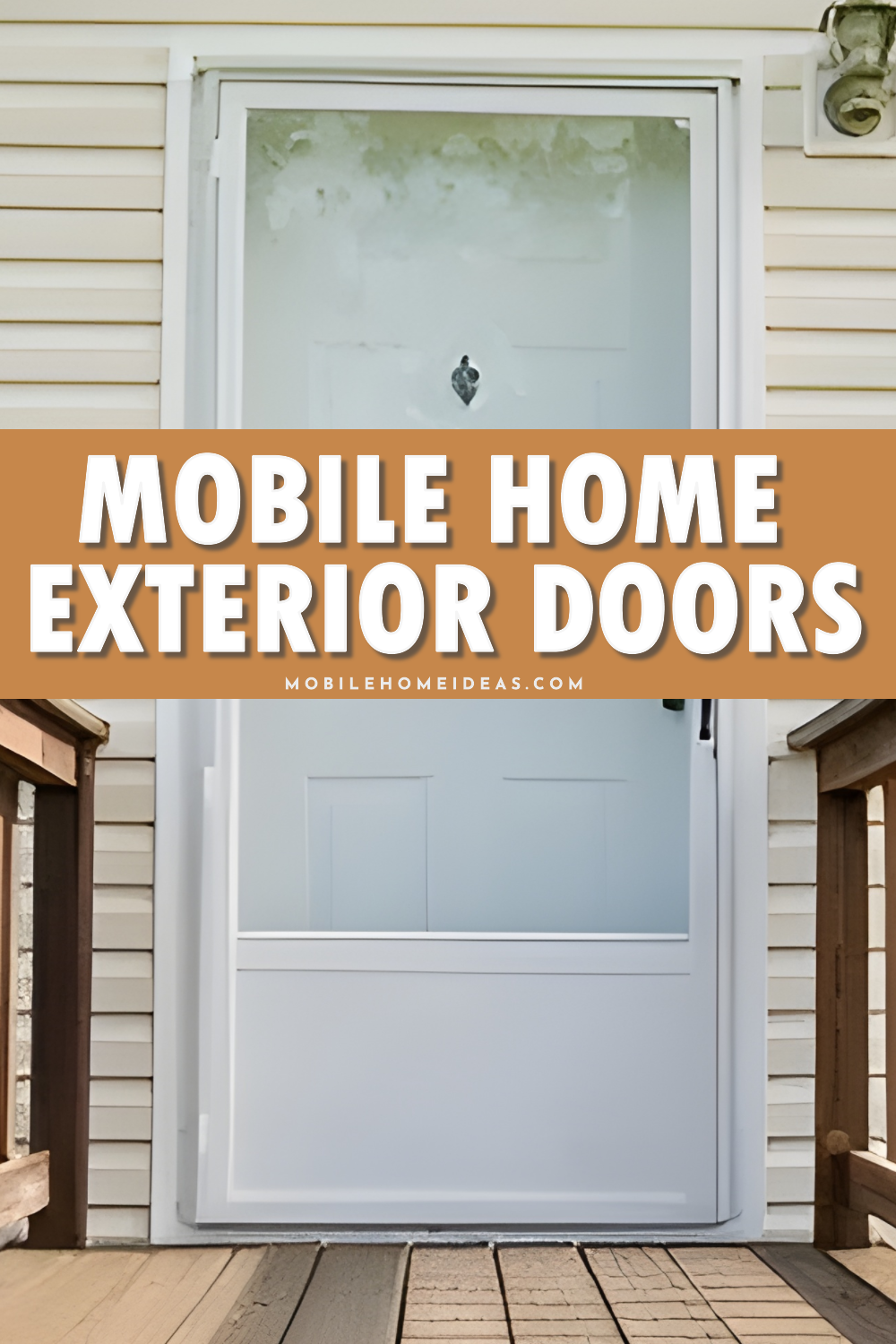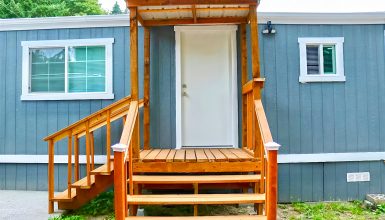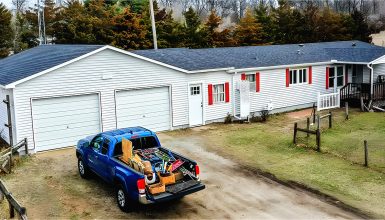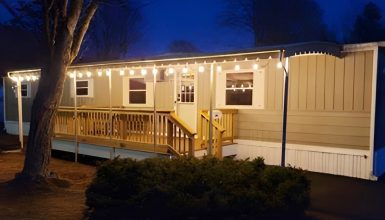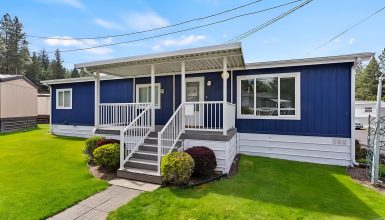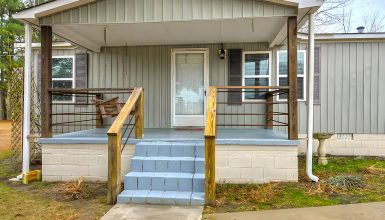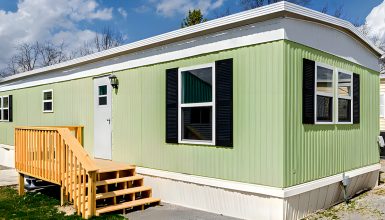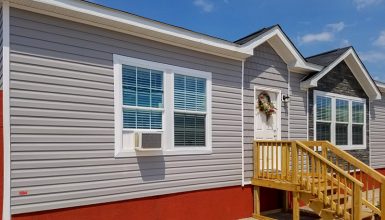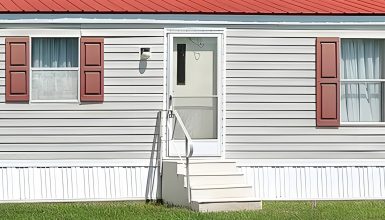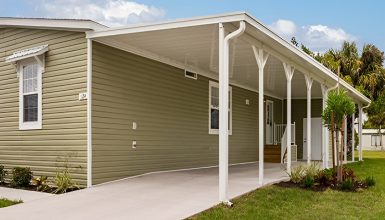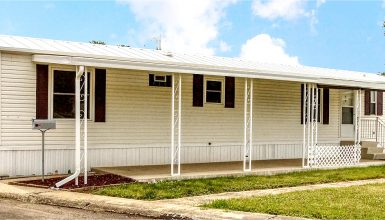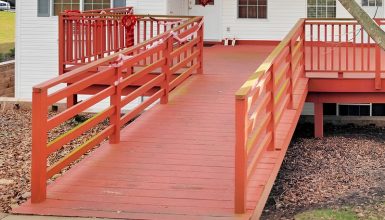When it comes to mobile home renovations, there are many factors to consider, from aesthetic updates to functional improvements. Upgrading your exterior door is one of the most impactful changes you can make to your mobile home.
Not only can a new door improve the look and feel of your home, but it can also enhance security, energy efficiency, and overall functionality. Choosing the right exterior door is especially important because of mobile homes’ unique dimensions and construction.
Types of Mobile Home Exterior Doors
Several options exist when choosing the right exterior door for your mobile home. Each type of door offers unique benefits and drawbacks, so it’s essential to understand your needs and preferences before deciding. Let’s explore the most popular types of exterior doors.
1. Combination Exterior Doors
Combination doors are popular for mobile homes because they offer the benefits of a regular exterior door and a storm door in one unit. These doors consist of a typical exterior door that swings inward and a storm door that swings outward, providing additional protection against the elements.
2. Out-Swing Exterior Doors
Out-swing exterior doors are an excellent option for mobile homes because they don’t occupy valuable interior space. Unlike traditional interior doors, out-swing exterior doors swing outward, making them a space-saving choice. They also provide increased security because the hinges are on outside, making it more difficult for intruders to force the door open.
3. Storm Doors
Storm doors are installed before an exterior door, offering extra protection against the elements. They can help reduce energy costs by providing additional insulation. They are available in various styles and finishes to enhance your home’s curb appeal.
4. Security Doors
Security doors are popular for mobile homes because they protect against intruders. They are sturdy and durable, with features such as heavy-duty frames, multiple locks, and reinforced glass.
5. Patio Exterior Doors
Patio doors are an excellent choice to increase the natural light in your mobile home while providing easy access to your outdoor space. They are available in various materials, including vinyl, fiberglass, and wood.
Material Options
The material is one of the most important considerations when choosing the right exterior door for your mobile home. Your preferred material can impact the door’s durability, energy efficiency, and appearance. Here are some of the most common material options:
- Steel
Steel is famous for mobile home exterior doors because it is durable, energy-efficient, and low maintenance. Also, these doors are typically less expensive than other materials and offer good security.
- Fiberglass
Fiberglass doors are another popular option for mobile homes. They are lightweight, energy-efficient, and low-maintenance. You can paint it or stain it to match your home’s exterior.
- Wood
Wood doors are a classic choice for mobile homes. They offer a natural, warm appearance and can be customized with different finishes and stains. However, they require more maintenance than steel or fiberglass doors and are generally more expensive.
- Aluminum
Aluminum doors are lightweight and low-maintenance, making them popular for mobile homes. They are also less expensive than other materials. However, they are less energy-efficient than steel or fiberglass doors and may not offer as much security.
Ultimately, the material you choose for your mobile home exterior door will depend on your preferences, budget, and the climate in your area. Insulated steel or fiberglass doors are great options for those in colder climates. In warmer temperatures, doors made of aluminum or vinyl may be more suitable.
Mobile Home Exterior Door Sizes
Unlike traditional homes, mobile homes have a unique construction that requires doors to fit specific dimensions. The most common mobile home exterior door size is 32 inches by 76 inches. However, other sizes are available, including 34 inches by 76 inches, 36 inches by 76 inches, and 32 inches by 80 inches.
It’s important to note all mobile home door sizes refer to the door’s rough opening. The actual size of the door assembly sometimes called the “buck size,” will be slightly smaller than the rough opening to allow for adjustments to ensure the door is level and plumb. In addition, the standard door sizes may not be the same for all mobile homes. Some manufacturers may use slightly different sizes.
Measuring an Exterior Door for Replacement
Measuring your mobile home exterior door for replacement is essential in selecting the right door for your home. Accurate measurements will ensure that the replacement door fits appropriately and operates smoothly. Let’s look at how to measure it.
Step 1: Measure the Rough Opening
The first measurement you need to take is the width and height of the rough opening. It is the size of the hole in the side of the door that you removed. Here is how to measure it:
- Remove the existing door and measure the width and height of the opening.
- Measure from the inside of the frame to the inside of the frame.
- Write down these measurements as you will use them to determine the size of the replacement door.
Step 2: Determine the Call Size
The call size refers to the width and height of the stud-to-stud rough opening in the wall where you install the entire door (including the frame). But how do you measure the call size? The method can vary depending on the type of doors.
- Combination Doors
To determine the call size of the combination door, subtract ½ inch from the width and height measurements you took in step 1. For example, if the rough opening is 32 ½ inches wide and 76 ½ inches tall, the call size for the replacement door would be 32 inches by 76 inches.
Tips:
If you can’t remove the door first, remove the interior trim, measure the door with the side jambs, and add ½ inch (.5″). It will give you the call size for width and height.
- Out-Swing Doors
For out-swing doors, you’ll need to measure the inside aluminum frame from side to side for width and from the header down to the threshold for height. Make sure to round up to the nearest even number of inches for both measurements.
- Storm Doors
The measurement method is slightly different when dealing with storm doors.
For the width: open the door and measure the inside jamb from side to side. Then, add two inches to get your call size width. An example, if it measures 33 inches, add 2 inches to get a 35″ call size.
For the height: measure the inside jamb from the header down to the threshold, and add one inch to get the call size height. For example, if it measures 76, add one inch for a 77″ call size height.
Step 3: Measure the Jamb Size
The jamb size is the wall thickness where the door is attached. It is essential for combination doors where the frame or jamb belongs in the assembly. To measure the jamb size, you need to remove the interior trim around the door and measure the thickness of the wall. Make sure to measure the thickness of the wall, not just the door itself. The jamb size will vary depending on the age and construction of your mobile home. Generally, it is 4 ½” to 6 ½” thick.
How to Install Mobile Home Exterior Door
Installing a new exterior door for your mobile home is a great way to improve its look and functionality. While it may seem daunting, it can be a successful DIY project with the proper preparation and step-by-step approach. Here’s how to install it using the flange mounting system:
Before installing:
- Ensure the new door matches the rough opening call size.
- Inspect the mounting flanges to confirm they haven’t broken during shipping or handling.
- Apply sealant on the floor so that the outside edges of the sill (both sides) will be sealed to the floor, extending about 6 inches up the frame/jamb.
- Apply sealant to the backside of the mounting flange in line with the pre-punched holes.
Step 1: Place the door
Before you place the door in the rough opening, take a moment to make sure the rough opening sill is square to the floor. If it’s not, you’ll need to remove the door and restructure the rough opening.
Once the rough opening sill is square, you can confidently place the door in the opening and move on to the next step of the installation process.
Step 2: Center the door
Once you have the rough opening squared away, it’s time to focus on centering the door from left to right. This step ensures a proper fit for your new exterior door. As you’re centering the door, ensure the sill remains in contact with the rough opening sill. To secure the door, you’ll need corrosion-resistant fasteners with a minimum of 1-inch penetration into the framing members.
It’s essential to pay attention to the details here. So while holding the door frame flat against the exterior of the wall, carefully install screws at the designated mounting locations.
Ensuring at least 1 inch of penetration from the door jamb or head into the wall studs. Whatever you do, don’t overdrive the fasteners, as this will compromise the seal and could cause issues down the line.
Step 3: Check the door frame
Once you’ve centered the door and secured it with fasteners. It’s time to recheck the door frame to ensure everything is correct. This step is essential to ensure it is secure and functioning correctly.
Take a moment to confirm that the door frame is centered from side to side in the opening. Also, the door frame members are straight and square. One handy trick is to measure opposite corners of the door frame. Similar to measuring the diagonals of the rough opening and allowing for an allowance of 1/8 inch or smaller. If the door frame is not square, don’t worry! Remove the fasteners and re-install the frame.
With the door frame squared away, install the rest of the fasteners. Start in the center of each side of the door and work your way out to the corners. It’s essential to ensure the pins are attached to every hole.
Step 4: Place shims
Now that your exterior door is securely fastened, it’s time to ensure it’s operating correctly. To do this, you’ll need to add shims to the frame at the hinge locations into the frame/jamb and at the strike plate from the home’s interior.
It’s necessary to note that shims should only use if there is a gap between the door jamb, strike plate, and sidewall studs. Don’t force the shims in, as this could cause damage to the frame.
Step 5: Fastener the jamb hinges
The next step in installing your exterior door is to open it up and install a fastener into all three mounting jamb hinges through the open hole in the center of each hinge.
To ensure your new exterior door is as secure as possible, you’ll also need to run screws of sufficient length through the jamb between the lock plate and the deadbolt strike plate. These screws should penetrate the structural member of the rough opening a minimum of 1 inch to ensure maximum security.
Step 6: Remove pre-squaring clips
Congratulations, you’re almost finished! With the door securely fastened, it’s time to add the final touches to ensure it’s fully functional. First, make sure to remove any pre-squaring clips.
Next, it’s time to add any remaining door hardware. Depending on your preferences, this could include anything from a doorknob to a peephole. By installing this hardware, you’ll ensure that the door opens and closes smoothly and that you have all the necessary features for maximum security and convenience.
Now, it’s time to test your door for correct operation. Open and close it a few times to ensure it works properly.
Conclusion
And that’s all you need to know about mobile home exterior doors! You should now understand the different types of doors available, how to measure your door for replacement, and the installation process. Thank you for reading!
References:
https://www.randgsupply.com/12079-2/
https://rmhparts.com/wp-content/uploads/2018/02/Doors-and-Windows.pdf

